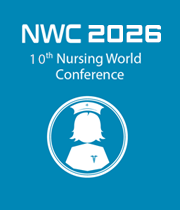Title : Reducing the risk: Evaluating the efficacy of new checklist-based guidelines in hemodialysis
Abstract:
This presentation will address the rise in catheter-related bloodstream infections (CRBSIs) within the hospital inpatient dialysis unit, marking a 29.17% increase from 24 cases in 2022 to 31 in 2023. CRBSIs represent a significant health risk, significantly contributing to morbidity and mortality among hemodialysis patients, with infection rates varying widely from 1% to 42.5% based on demographic factors (Al-Barshomy et al., 2020). Several critical risk factors for CRBSIs have been identified, including prolonged catheter use, diabetes, and repeated catheter punctures (Khatun et al., 2023). These high infection rates point to potential deficiencies in adhering to CDC guidelines, necessitating urgent action to improve infection control protocols within dialysis units. The hospital’s Infection Control Quality team is spearheading efforts to combat this issue by implementing stringent new infection control guidelines. Key strategies include enhancing the disinfection processes of hub connections to reduce infection risks. The new guidelines feature refined protocols alongside structured checklists to guide training sessions and audits, referencing established standards from the CDC (2021) and the AACN (2016). The unit employs approximately 80 registered nurses who cater to a daily patient volume of around 100, underscoring the importance of universal compliance with these new measures. To address persistent challenges in catheter management and effectively reduce CRBSIs, we will emphasize targeted interventions through improved adherence to prevention practices. Central to our approach is introducing checklist-based guidelines and specialized kits, applied through a Plan-Do-Study-Act (PDSA) cycle to achieve sustainable improvements. This multi-faceted strategy emphasizes comprehensive staff education and training, supplemented by the distribution of updated guidelines. A dedicated dialysis catheter access and de-accessing checklist will serve as both a training resource and an auditing tool for new hires, ensuring clarity in procedural protocols. Monitoring compliance will involve weekly audits conducted by a randomly selected team of ten nurses, which will help pinpoint areas for improvement. Incorporated within a Quality Improvement Framework using the PDSA cycle, we will evaluate CRBSI rates and guideline adherence over six months, refining interventions based on our findings. The issues extend beyond CRBSIs, with the hospital observing a 42.86% increase in Central Line-Associated Bloodstream Infections (CLABSIs) from 21 cases in 2022 to 30 in 2023. However, following the implementation of a new kit and checklist in July 2024, a notable reduction in CLABSI cases was recorded – from 15 cases between January and June 2024 to 12 cases between July and September, illustrating a 20% decrease. Such outcomes highlight the efficacy of these targeted interventions and underscore the necessity for continuous monitoring and collaboration to strengthen preventive practices across the hospital. The presentation will conclude with an emphasis on fostering a culture of continuous improvement and prioritizing patient safety through rigorous infection control practices, reinforced by regular collaborative meetings to maintain high standards within dialysis care.



